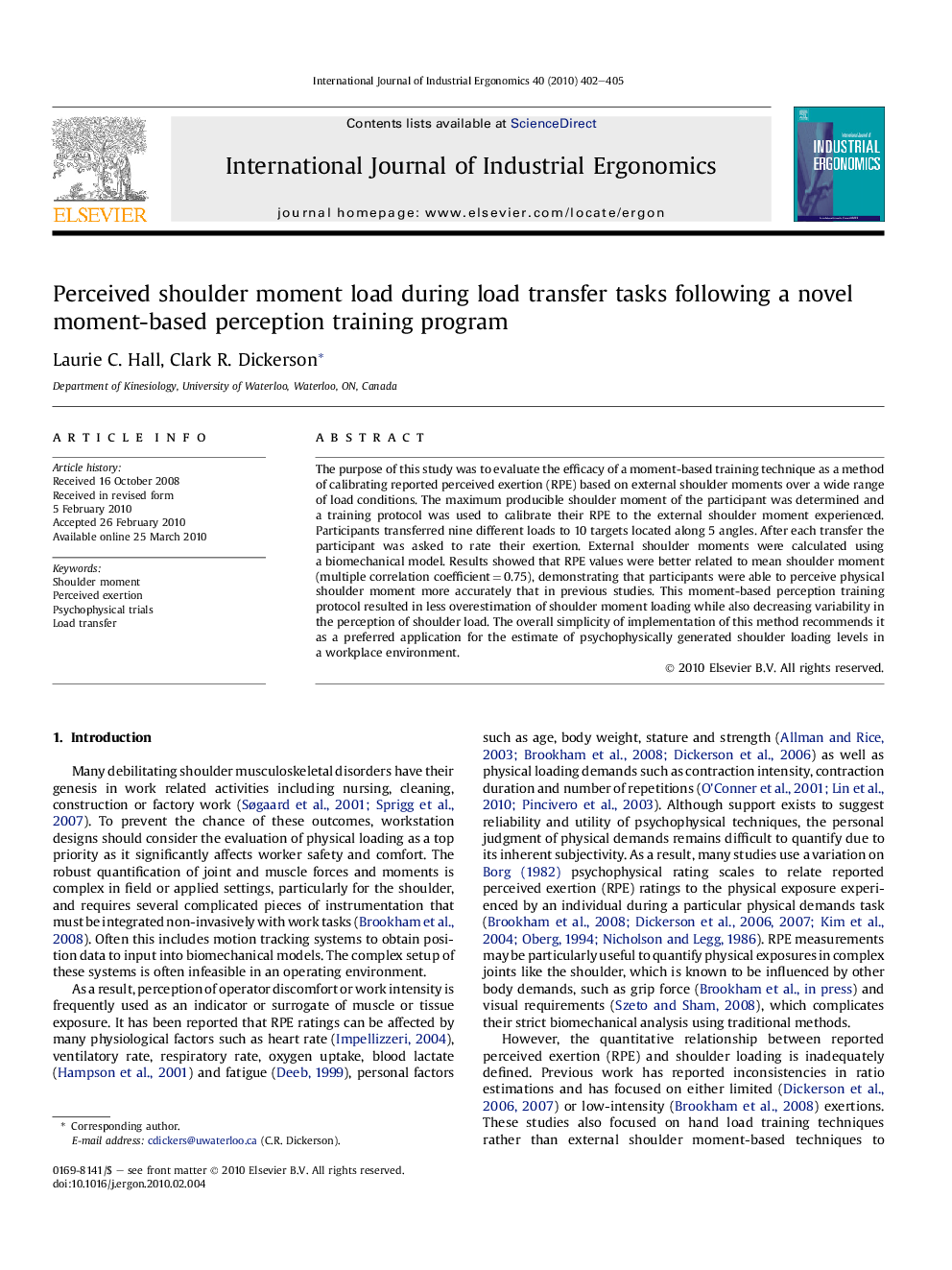| Article ID | Journal | Published Year | Pages | File Type |
|---|---|---|---|---|
| 1096702 | International Journal of Industrial Ergonomics | 2010 | 4 Pages |
The purpose of this study was to evaluate the efficacy of a moment-based training technique as a method of calibrating reported perceived exertion (RPE) based on external shoulder moments over a wide range of load conditions. The maximum producible shoulder moment of the participant was determined and a training protocol was used to calibrate their RPE to the external shoulder moment experienced. Participants transferred nine different loads to 10 targets located along 5 angles. After each transfer the participant was asked to rate their exertion. External shoulder moments were calculated using a biomechanical model. Results showed that RPE values were better related to mean shoulder moment (multiple correlation coefficient = 0.75), demonstrating that participants were able to perceive physical shoulder moment more accurately that in previous studies. This moment-based perception training protocol resulted in less overestimation of shoulder moment loading while also decreasing variability in the perception of shoulder load. The overall simplicity of implementation of this method recommends it as a preferred application for the estimate of psychophysically generated shoulder loading levels in a workplace environment.
